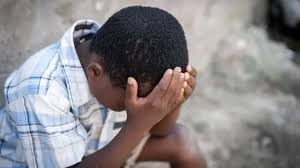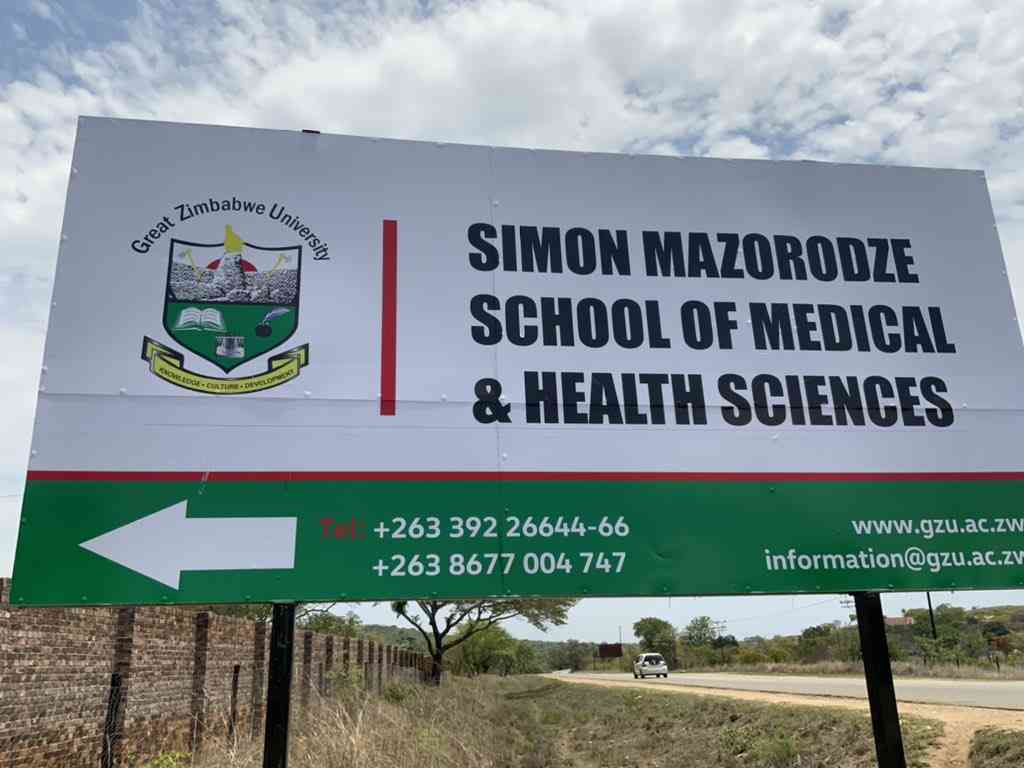
SEXUAL violence against boys is an urgent and growing concern globally and in Zimbabwe, as recent media reports have revealed a troubling increase in cases.
This issue highlights the vulnerability of boys, which has been largely marginalised, leading to underreporting and negative outcomes.
The crisis also raises deeper questions about the safety of institutions such as schools that have a mandate to ensure safeguarding and protection of children.
A hidden crisis
Sexual abuse of boys is a hidden crisis.
In general, issues of sexual abuse are not spoken about enough in Zimbabwean society, much less is spoken of regarding sexual abuse perpetrated on boys.
The silence culture is enabling abuse to go on undetected and unchecked.
In many homes and schools, children are still being raised under a culture of silence and fear, where speaking up is considered disrespectful and sex is a taboo subject of discussion.
- Feature: Killings raise gender violence concerns in Zim
- Unicef hails changes in Zim age of consent law
- Breaking the silence: Addressing sexual violence against boys in Zim
Keep Reading
This silence is not protection.
It is complicity. When children lack the language, confidence, and safe spaces to speak about and report abuse, perpetrators thrive.
Boys who experience sexual violence often face societal norms and cultural stigmas that discourage them from seeking help.
This failure to acknowledge the vulnerability of the boy child and their invisibility is compounded by a lack of awareness and understanding, leaving many cases unreported and unresolved.
Research shows that boys who experience sexual abuse are less likely to ask for help and more likely to face challenges in future relationships, underscoring the long-term impact of this issue.
Recent data on sexual violence in Zimbabwe highlights the gravity of the issue.
For instance, in the third quarter of 2023, there were 2 736 cases of sexual violence reported, equating to a crime rate of 18 per 100 000 people.
While this statistic encompasses all genders, it underscores the broader crisis of sexual violence in the country.
Unfortunately, specific statistics focusing solely on boys remain scarce, reflecting the persistent underreporting and marginalisation of male survivors.
This lack of detailed data further emphasises the need for targeted research and advocacy to address the unique vulnerabilities boys face.
Institutional failures
The safety of schools and other institutions has come under scrutiny, with recent reports implicating trusted figures such as educators and caregivers in abuse cases.
These betrayals of trust highlight the need for stronger measures to ensure the protection of all children, particularly boys, within these environments.
The shocking revelations that over 30 pupils were allegedly sodomised by a school’s deputy headmaster must send chills down every parent’s spine.
This is a moment of reckoning for Zimbabwe.
It is a painful reminder that schools, which should be sanctuaries of learning, growth and safety, can become spaces of trauma when systems meant to nurture and protect children are weak or ignored.
The fact that a deputy headmaster could allegedly carry out such acts repeatedly, without detection or intervention, is not just a personal failure — it is a system failure.
While this case is shocking in its scale, it is sadly not an isolated incident.
It is a brutal reflection of the deep-rooted weaknesses in our child protection systems within the education sector and shows that our systems for safeguarding children are dangerously inadequate.
For far too long, cases of abuse have been swept under the carpet, with victims silenced by shame, fear and a lack of trust in systems that should protect them.
These recent cases are shocking and alarming, but must be used as a wake-up call to re-evaluate the safety of schools nationwide.
We must rethink the entire system.
Children spend more of their waking hours at school than they do at home.
Schools are, in essence, where children live, learn and grow.
This makes it all the more urgent that we treat schools not just as places of academic instruction, but as primary caregiving environments—spaces where every child must be safe, heard, and protected.
This moment calls for urgent introspection and action.
From the training of teachers to the recruitment processes, from raising children’s awareness to strengthening accountability structures—every level of our school system needs an overhaul.
We must ask ourselves:
l Are teachers adequately trained in safeguarding, ethics, and child protection? Such training should be embedded into every teachers training institution and annual mandatory certified child safeguarding refresher trainings for all teaching and ancillary staff.
The training should include child abuse indicators, safe touch policies, handling disclosures, and referral procedures.
l Are we vetting school staff thoroughly before they are given access to children? Strengthen recruitment and vetting protocols by implementing mandatory background checks and psychometric assessments for school personnel to assess their suitability to access to children.
l Are our schools equipped with functional, enforced child safeguarding systems and policies? Robust child safeguarding systems need to put into place for every school with regular audits and external oversight to ensure compliance and accountability.
Regular, unannounced school inspections must include a review of safeguarding systems and interviews with students while engaging civil society in independent monitoring of school environments.
Schools should develop and publicly display their safeguarding policies with clear reporting pathways.
Implement child-friendly, confidential and accessible reporting mechanisms in all schools (e.g. anonymous reporting boxes, suggestion books, peer support systems, strengthen access to the national children’s helpline 116) that are monitored by independent actors.
Establishing school based safeguarding committees with trained child representatives and focal persons is crucial.
l Is it time that our schools started employing full-time, trained school-based social workers who are designated solely to pay attention to safeguarding and protection practices within schools.
In a school environment, children need a safe place to discuss their issues and raise concerns with no fear of unequal power dynamics or repercussions.
l Are children, from ECD to Form 6, being taught in age-appropriate ways how to understand, prevent, identify, and report abuse? It is critical for children to have a level of awareness regarding child sexual abuse from as early as possible.
Safeguarding education should be integrated into the curriculum from the lowest grade with complimentary awareness sessions.
Embed body autonomy, consent, and safety education into the curriculum starting from ECD level, using appropriate language and interactive methods.
It is non-negotiable because sexual violence against children has become a pandemic in our societies.
l Are our communities and parents supported to talk to their children and respond to red flags? Parents are the first line of defence in a child’s life, but many are overwhelmed by economic pressures.
In pursuit of livelihoods, some may unwittingly delegate critical aspects of parenting to third parties—relatives, neighbours, or even strangers—who may not always have the child’s best interests at heart.
Parents and guardians must prioritise meaningful conversations with their children, asking open-ended questions about their day, their feelings, and their interactions.
This creates an environment of trust. Children must feel safe reporting concerns without fear of punishment or disbelief.
Parents must know who their child interacts and spends time with—teachers, coaches, drivers, neighbours, friends and teach body safety and boundaries early using culturally appropriate, respectful but clear language to help them understand private parts, consent, and inappropriate behaviour.
It is considered a cultural taboo for parents to discuss issues of sex and sexuality with their children.
This increases the risk of children being violated in silence without space to confide in their parents.
Parents should teach their children about boundaries—no one should touch them inappropriately, not a parent, relative or even someone in authority and they must create a safe communication space where children can speak up without fear of punishment or disbelief.
It is imperative that parents build strong relationships with their children and discuss these crucial issues in age appropriate ways so that their children are equipped and can turn to them when violations occur.
Parents should watch for and investigate signs of distress—sudden changes in behaviour, mood, fear of certain people, secrecy or reluctance to go to school may be warning signs.
l Ultimately, everyone should report suspected abuse immediately. Parents, caregivers, communities, teachers should not handle it quietly—children deserve justice, medical attention and protection.
Delays in reporting can increase harm and make investigations harder.
Duty bearers should ensure that perpetrators are prosecuted swiftly, with deterrent sentences that send a clear message: schools are no hunting ground for abusers and keep the community informed of outcomes to restore trust in the system.
To combat sexual violence against boys, a multifaceted approach is needed.
Awareness campaigns are critical to educate communities first and foremost about the vulnerability of the boy child, the prevalence and impact of sexual violence against boys.
Policy reform is necessary to strengthen laws and policies and ensure that they adequately provide comprehensive protection and support for male survivors and the prevention of sexual violence against both boys and girls, including vulnerable groups such as children with disabilities and those in boarding schools.
Policy ambiguity without a gendered lense is not an option.
There is need to establish accessible and specialised support services for boys who have experienced abuse and be proactive to set up systems for the prevention of such abuse.
Efforts should be intensified to capacitate communities and parents to build safeguarding mechanisms at the household level and challenge institutions responsible for the care of their children to do the same.
We must challenge stigma and social norms that imply that men and boys cannot be vulnerable or cannot be violated.
We must address societal norms and cultural beliefs that discourage boys from seeking help. We cannot wait for more children to be harmed before we act.
Blue Umbrella Day: A global call to action
April 16 marks Blue Umbrella Day (BUD), an international day dedicated to raising awareness about the protection of boys from sexual violence.
Advocates are urging the United Nations to officially recognise April 16 as an international day for the prevention of sexual violence against boys.
This initiative aims to address the gaps in understanding, policy, and service provision for boys who experience abuse.
Sexual violence against boys is a critically overlooked issue that demands urgent attention.
As Zimbabwe grapples with this crisis, it is essential to break the silence, challenge stigmas, and create a society where all children, regardless of gender, are safe and protected.
Blue Umbrella Day serves as a powerful reminder of the need for collective action to safeguard the future of our boys.
Author: Kudzai-Vimbiso Tseriwa is a child protection social worker in Zimbabwe.










